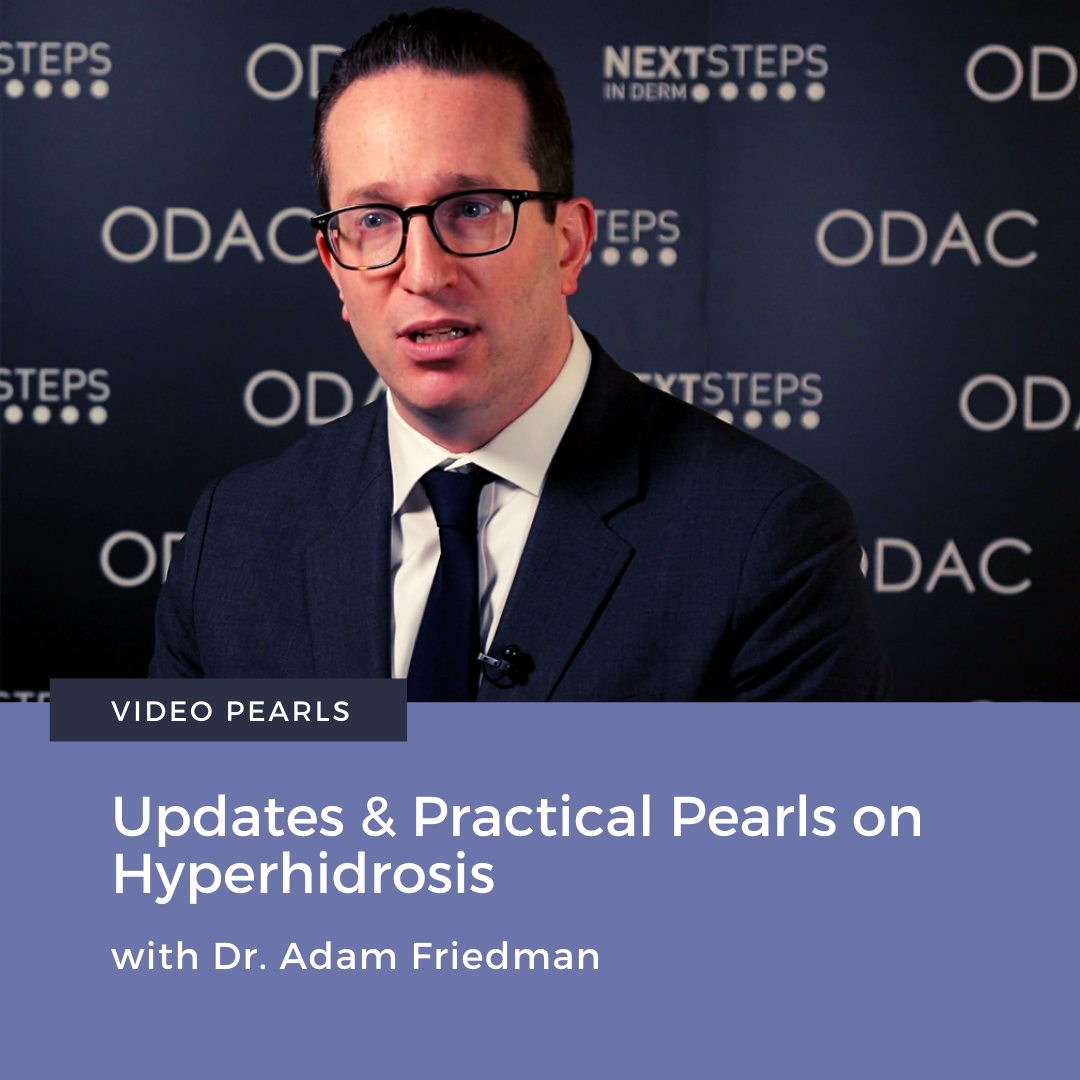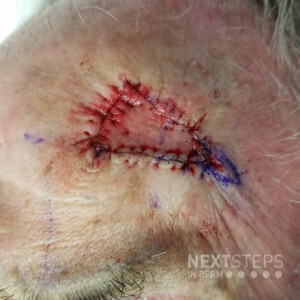Updates & Practical Pearls on Hyperhidrosis
 Hyperhidrosis, an extremely prevalent disease affecting about 15 million Americans and 365 million people worldwide, is equally matched by impact and burden on quality of life. Identifying these patients and making them know that this is a true medical problem can be absolutely life-altering.
Next Steps in Derm, in partnership with ODAC Dermatology, Aesthetic and Surgical Conference intervie …
Hyperhidrosis, an extremely prevalent disease affecting about 15 million Americans and 365 million people worldwide, is equally matched by impact and burden on quality of life. Identifying these patients and making them know that this is a true medical problem can be absolutely life-altering.
Next Steps in Derm, in partnership with ODAC Dermatology, Aesthetic and Surgical Conference intervie …
 Hyperhidrosis, an extremely prevalent disease affecting about 15 million Americans and 365 million people worldwide, is equally matched by impact and burden on quality of life. Identifying these patients and making them know that this is a true medical problem can be absolutely life-altering.
Next Steps in Derm, in partnership with ODAC Dermatology, Aesthetic and Surgical Conference intervie …
Hyperhidrosis, an extremely prevalent disease affecting about 15 million Americans and 365 million people worldwide, is equally matched by impact and burden on quality of life. Identifying these patients and making them know that this is a true medical problem can be absolutely life-altering.
Next Steps in Derm, in partnership with ODAC Dermatology, Aesthetic and Surgical Conference intervie … Continue reading "Updates & Practical Pearls on Hyperhidrosis"


 What would this lesion most likely stain with?
A. S100
B. MART1
C. Giemsa
D. Congo Red
E. Von Kossa
To find out the correct answer and read the explanation, click here.
Brought to you by our brand partner Derm In-Review. A product of SanovaWorks.
…
What would this lesion most likely stain with?
A. S100
B. MART1
C. Giemsa
D. Congo Red
E. Von Kossa
To find out the correct answer and read the explanation, click here.
Brought to you by our brand partner Derm In-Review. A product of SanovaWorks.
…  In this month’s installment of Therapeutic Cheat Sheet, we will review methotrexate and its use in dermatology. Methotrexate has been utilized as therapy for psoriasis and many other dermatologic conditions since its approval by the FDA in 1972.1 While an effective systemic agent for a multitude of dermatologic and non-dermatologic diseases, prescribers should be aware of the side effect profile …
In this month’s installment of Therapeutic Cheat Sheet, we will review methotrexate and its use in dermatology. Methotrexate has been utilized as therapy for psoriasis and many other dermatologic conditions since its approval by the FDA in 1972.1 While an effective systemic agent for a multitude of dermatologic and non-dermatologic diseases, prescribers should be aware of the side effect profile …  Popsugar/Yahoo! Life recently posted an article about papulopustular rosacea and how common it is misdiagnosed.
For expert advice on how to correctly diagnose papulopustular rosacea, I consulted dermatologist Linda Stein Gold, MD, director of dermatology clinical research at Henry Ford Health System in Detroit, Mich., as well as division head of dermatology at Henry Ford Health System in West …
Popsugar/Yahoo! Life recently posted an article about papulopustular rosacea and how common it is misdiagnosed.
For expert advice on how to correctly diagnose papulopustular rosacea, I consulted dermatologist Linda Stein Gold, MD, director of dermatology clinical research at Henry Ford Health System in Detroit, Mich., as well as division head of dermatology at Henry Ford Health System in West …  This is an example of which type of flap?
A. Advancement
B. Rotation
C. Transposition
D. Interpolation
E. Axial
To find out the correct answer and read the explanation, click here.
Brought to you by our brand partner Derm In-Review. A product of SanovaWorks.
…
This is an example of which type of flap?
A. Advancement
B. Rotation
C. Transposition
D. Interpolation
E. Axial
To find out the correct answer and read the explanation, click here.
Brought to you by our brand partner Derm In-Review. A product of SanovaWorks.
…